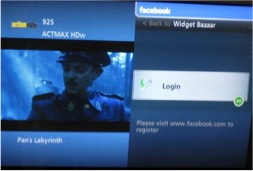Without a doubt, the value of a channel is directly linked with the value of its content. The traditional model of broadcasting is based on single source content production. It simply doesn’t allow people any control over what, how and where they can receive content. The channel provider solely manages the value of what's broadcast.
However, since the birth of digital technologies and peer-to-peer connectivity, people have begun to take more and more control over content and the channels broadcasting it. They can stop it, add to it, create it and above all share it with other people. In doing so, instead of seeking expert advice from brands or organisations, they are reaching out to people who they trust through personal or new, network-based interactions.
In this shift of power from corporate to people, brands are still struggling to understand that attention can no longer be bought. A recent infographic on mashable.com reveals that 86% of people skip television ads, 200 million Americans have registered their numbers on FTC’s ‘DO NOT CALL’ list, 91% of email users have unsubscribed from a company that they previously opted into, 44% of direct mail is never opened and 84% of 25- 34 year-olds have left a favourite website because of intrusive or irrelevant advertising.
When brands are no longer able to buy people’s attention, the only choice they are left with is to earn it. However, the problem with earning attention is that it cannot be bought. There’s no schedule for it and you can’t plan it like bought media. Sometimes, brands confuse earning attention as free media. This is dangerous. Earning attention is by no means is free. It requires dedication, resource allocation, time and risk. However, if brands are serious about earning attention then it can grant them not only true customer attention, but also offer a much better ROI. In terms of effectiveness, earned media costs 62% less per lead than bought media.
Soon, earning attention will no longer be a choice for brands. The increase in the number of channels that people use as well as the costs of multiplication of brand messages across different channels will make buying media space not only complex for brands, but also very costly.
In the future, smarter firms will increasingly invest in earning customers' attention through satisfying their social needs, thus utilising online social connections to communicate brands and products.
With the introduction of technologies such as Verizon Widget Bazaar Applications, which allow viewers to connect with others while viewing television and watch web-based videos, brands have already started to change passive TV viewing into a social experience, available on biggest screens available in the house.

Conclusion
Brands are no longer able to dictate to, dominate, or intrude upon people as they once did through buying attention. In order to maintain their credibility as well as their popularity, brands need to be liked by people at the same time as remaining accessible to them.
Relationships are earned not bought. The buying mind-set of brands is no longer relevant for environments where people share their social lives. Embedding brands in people's lives through utilising their social needs is the most effective way for brands to earn their place in always-on, socially connected lifestyles. This is because, as ever, people trust and value those who they know (as part of their social circle) over messages generated purely to buy their attention.

